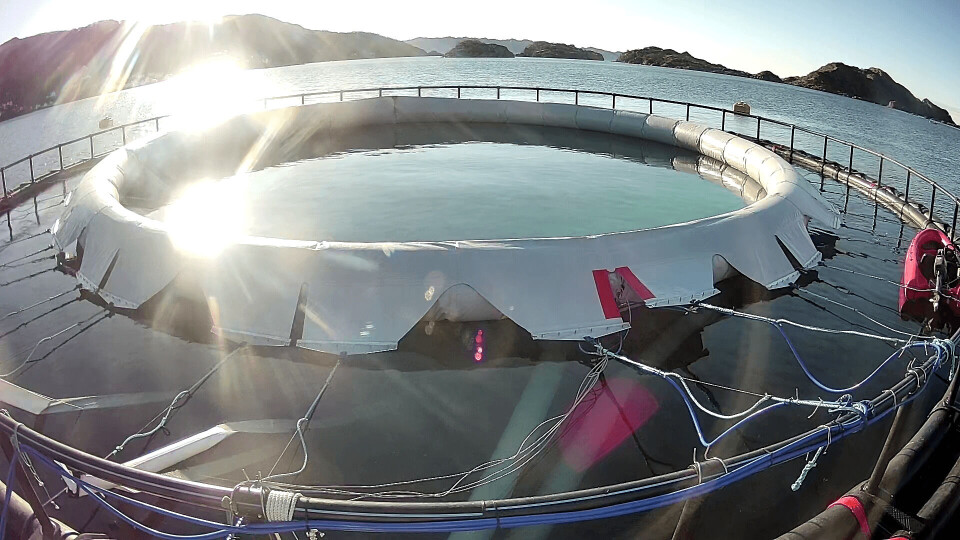
Closed-cage-within-a-cage to be tested in Norway
An automated, semi-closed containment system that has the potential to be used with existing cage collars is being trialled in Norway.
The Starfish system has been made by Nekkar AS, in cooperation with salmon farmer Lerøy Seafood.
It uses a bag and float collar both made of a soft, impermeable material developed and made in Norway specifically for the job. The Starfish is moored inside a standard collar which has a net to provide a second barrier against escape.
Like other semi-closed systems, Starfish draws water from below the lice layer and collects up to 90% of biological waste.
Pilot version
A small-scale pilot version has now been filled with seawater at Hidra outside Flekkefjord, which is about halfway between Kristiansund and Stavanger in southern Norway. Testing will begin towards the summer.
“The idea behind Starfish is to reduce the operating expenditure level dramatically for the fish farming industry, while simultaneously improving fish welfare and focusing on the circular economy,” said Mette Harv, executive vice president of Nekkar’s aquaculture division.
“We look forward to verifying the technical and operational parameters of the solution, before we start preparations for testing with biomass later this year.”
Harv said one of the benefits of the system was that fish farmers might have the option to use cages they already owned for the outside layer, although moorings would have to be enhanced and only the bigger pens - such as the 200-metre collars used in Norway – would be suitable. The company will know more about the feasibility of that option, and what distance is best between the outside and inside rings, after testing.
When it comes to automation, Starfish has a software platform for remote surveillance, data acquisition, bio analytics and production control. Nekkar already has competence and experience in its Intellilift division, which supplies control systems, flexible interfaces and advanced intelligent diagnostic systems for the oil and gas industry.
Ready in a year
Dependent on testing, Harv hopes to have the Starfish commercially available by around Easter next year, first in Norway and then in other countries.
“There is a huge interest in it,” said Harv. “We certainly see the opportunities globally.”
Harv pointed out that in both Norway and western Canada there is a political drive towards closed caged fish farming.
Market potential
“Today there are around 4,000 open cages in Norway. Closed cages will open up additional locations. This illustrates the market potential for Starfish,” concluded Harv.
Nekkar’s background is in engineering, electrification, automation, and digitalisation competence in the oil and gas industry, expertise it is now applying to aquaculture.
“Nekkar aims to develop disruptive technologies that offer high sustainability impact solutions for the aquaculture industry,” said chief executive Preben Liltved. “Starfish is the first example of this approach. We are excited about the forthcoming ocean testing and the future opportunities this may present.”























































